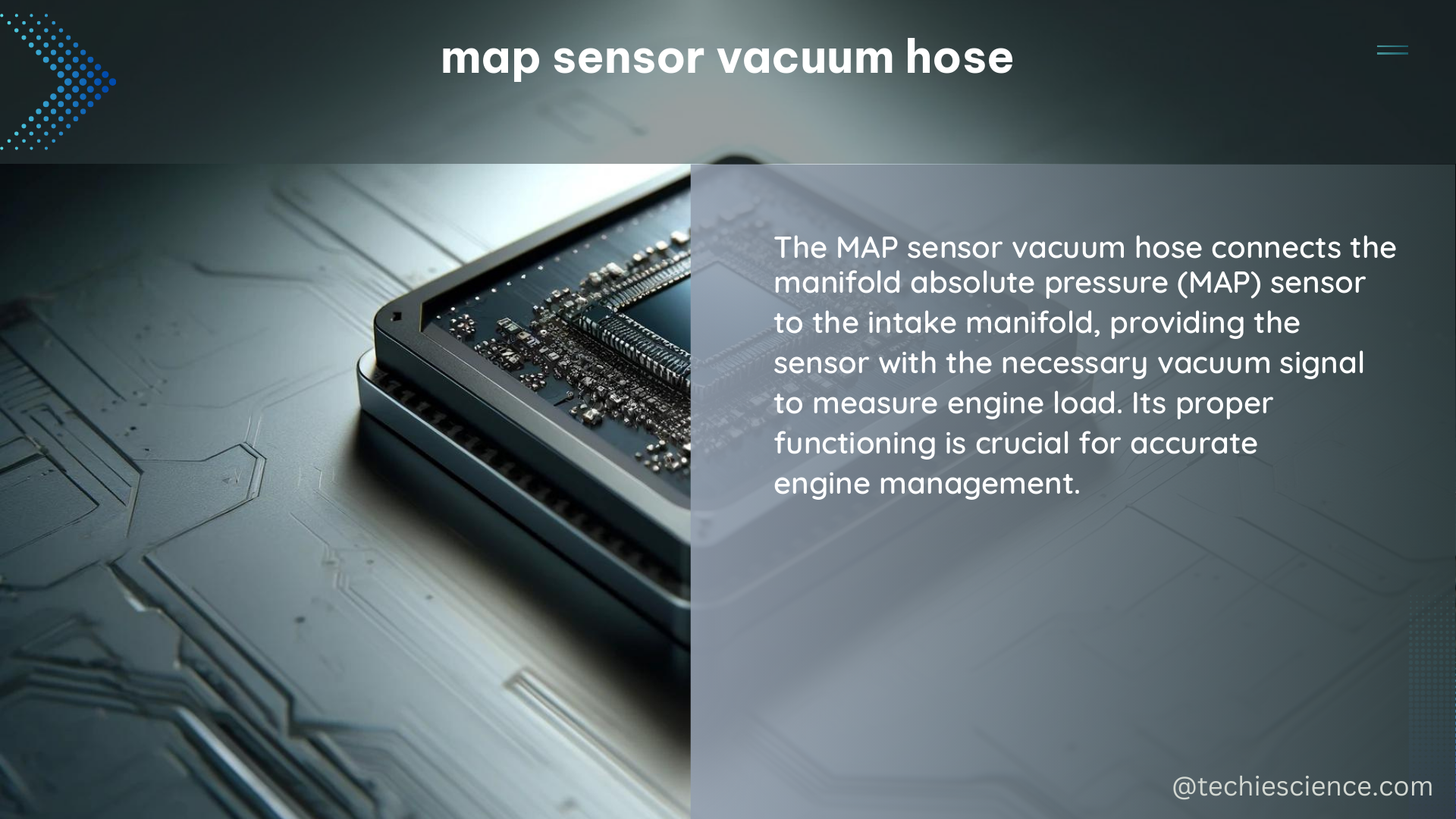The map sensor vacuum hose is a crucial component in the engine management system of a vehicle. It is responsible for transmitting the manifold absolute pressure (MAP) signal to the engine control unit (ECU), which uses this information to determine the engine’s load and adjust the air-fuel ratio accordingly. The vacuum hose is typically made of rubber or silicone and is connected to the intake manifold and the map sensor.
Understanding the Importance of Map Sensor Vacuum Hose
The map sensor vacuum hose plays a vital role in the proper functioning of the engine management system. It is responsible for transmitting the MAP signal, which is a crucial input for the ECU to determine the engine’s load and adjust the air-fuel ratio accordingly. The length and material of the vacuum hose can significantly impact the signal transmission, affecting the engine’s performance and efficiency.
Factors Affecting Signal Transmission
-
Hose Length: The length of the vacuum hose can affect the signal transmission. A longer hose can dampen the pulsations and delay the signal, while a shorter hose can provide a more immediate and accurate reading.
-
Hose Material: The material of the vacuum hose can also impact the signal transmission. Rubber hoses are more susceptible to deterioration and can collapse, leading to a dampened signal. Silicone hoses, on the other hand, are more durable and can maintain a consistent signal transmission.
-
Breather Hose: Some map sensors are equipped with a breather hose, which is designed to prevent the sensor from being overly sensitive to changes in vacuum or boost pressure in the intake. This helps the sensor maintain a more steady reading, improving the overall engine performance.
Interpreting Map Sensor Readings

The map sensor operates on a 5-volt reference circuit and reads the vacuum in the intake manifold, converting it into a voltage signal. By using a scan tool, you can interpret the map sensor readings and diagnose potential issues.
Voltage Readings
-
Engine Running: When the engine is running, the map sensor voltage should fluctuate based on the engine’s load and throttle position. A higher voltage indicates a higher vacuum, while a lower voltage indicates a lower vacuum.
-
Engine Idle: At idle, the map sensor voltage should be relatively stable, reflecting the engine’s baseline vacuum level.
-
Vacuum Leaks: If the map sensor voltage is consistently low or fluctuates erratically, it may indicate the presence of a vacuum leak in the intake system.
Troubleshooting Map Sensor Vacuum Hose Issues
If you encounter issues with your map sensor vacuum hose, there are several steps you can take to diagnose and resolve the problem.
Soft Vacuum Hoses
Some users have reported issues with using soft vacuum hoses, such as collapsed lines and poor performance. In these cases, the solution may be to use a shorter, harder vacuum hose in conjunction with an EPROM (Erasable Programmable Read-Only Memory) to control the MAP signal.
Increasing Vacuum Signal
In some cases, users have discussed the idea of increasing the vacuum signal to the map sensor by using larger vacuum hoses. However, it’s important to ensure that the hose size and configuration are compatible with the specific vehicle and engine management system.
Replacing Broken Vacuum Lines
If the vacuum line running to the map sensor is broken, finding a replacement can be challenging. It’s essential to measure the length and diameter of the original hose and purchase a replacement with the same specifications to ensure a proper fit and function.
Breather Hose Considerations
Some map sensors are equipped with a breather hose, which can affect the signal transmission. Understanding the role of the breather hose and how it interacts with the map sensor can help diagnose and resolve any issues related to the vacuum hose system.
Technical Specifications of Map Sensor Vacuum Hose
| Specification | Value |
|---|---|
| Material | Rubber or Silicone |
| Length | Varies depending on the application |
| Diameter | Varies depending on the application |
| Operating Range | Vacuum to 50 inHg (0 to 1.25 bar) |
| Temperature Range | -40°F to 257°F (-40°C to 125°C) |
| Pressure Rating | Varies depending on the application |
DIY Guide for Map Sensor Vacuum Hose Replacement
- Locate the map sensor and intake manifold on your vehicle.
- Disconnect the vacuum hose from the map sensor and intake manifold.
- Measure the length and diameter of the vacuum hose.
- Purchase a replacement vacuum hose with the same specifications.
- Install the new vacuum hose, ensuring a secure connection to the map sensor and intake manifold.
Remember to always refer to your vehicle’s service manual or consult a professional mechanic if you’re unsure about any part of the process.
References
- Interpreting Map Sensor Readings
- Effects of Map Sensor Line Length
- Increasing Vacuum Signal to Map Sensor
- Replacing Map Sensor Vacuum Line
- Map Sensor Breather Hose

The lambdageeks.com Core SME Team is a group of experienced subject matter experts from diverse scientific and technical fields including Physics, Chemistry, Technology,Electronics & Electrical Engineering, Automotive, Mechanical Engineering. Our team collaborates to create high-quality, well-researched articles on a wide range of science and technology topics for the lambdageeks.com website.
All Our Senior SME are having more than 7 Years of experience in the respective fields . They are either Working Industry Professionals or assocaited With different Universities. Refer Our Authors Page to get to know About our Core SMEs.